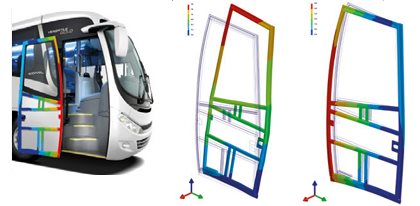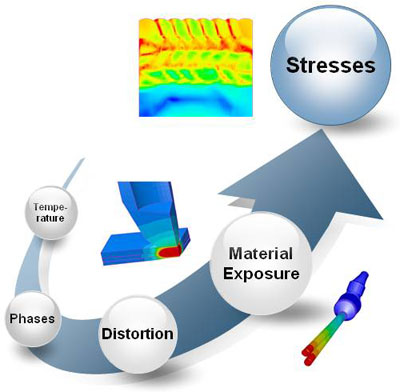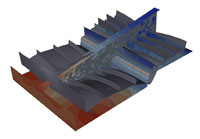ESI SYSWELD offers a unique computer-aided assessment of chemical, thermal, metallurgical and mechanical phenomena encountered in the welding, assembly and heat treatment processes. It is designed to:
- Minimize the cost of prototyping,
- Minimize the cost of distortion repair work,
- Develop and optimize a weld plan within the shortest time range,
- Keep welding distortion within allowable tolerances,
- Guarantee the best weld quality,
- Control stresses in welded designs.
SYSWELD helps the user predict how mechanical load and heat effects successive manufacturing processes, allowing cost-effective distortion engineering, and weld quality and residual stress control.

Main Benefits of SYSWELD for Heat Treatment (HT) Simulation
- Avoid component distortion and high material hardness during or after HT
- Obtain correct material strength, toughness and hardness
- Ensure high wear resistance of the contacting surfaces
- Achieve the required distribution of residual stresses

Weld Quality
With simulation-based weld quality and residual stress engineering, you can:
- Use weld quality simulation to check if the weld will perform as well as the parent material and will not affect the ability of the parent material to perform as stated in its material specification
- Choose the best possible material
- Determine the best possible micro-structure after welding
- Evaluate material exposure
- Control residual stresses
- Minimize tensile stresses to avoid buckling

Distortion Engineering Simulation
With simulation-based distortion engineering, you can:
- Reduce the amount of prototyping and distortion repair work
- Develop a weld plan
- Identify distortion directions and magnitude
- Keep distortion within given tolerances
- Minimize gap fit up forces
- Minimize deviation from fixture forces
- Minimize the amount of weld consumables needed
- Minimize clamp tooling
